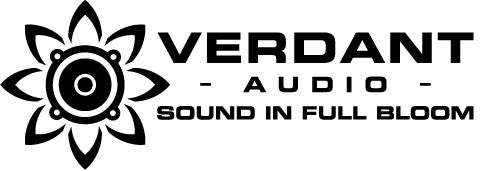Antipodes products are not available for sale on-line. Please e-mail info@verdantaudio.com or call 475-350-9876 to inquire about purchase.
A History of Antipodes Audio:
2009 - The Beginnings
Antipodes Audio first began research into music server design in 2009. We found that simple circuits, high quality parts and a focus on reducing noise interference with the digital audio signal delivered the best results. Having spent 25 years working in digital audio transmission systems businesses before founding Antipodes Audio had also taught us some tricks.
We launched our first Antipodes music servers in 2011, and by then we had realised that it was not just the quantum of noise that mattered, but the frequencies at which the noise peaked. By 2014 we developed sophisticated techniques to go beyond noise reduction, to be shaping that noise. In the design of motherboards, an important technique used is called 'spread spectrum', and this is used to reduce noise by spreading the peaks across a wider frequency band. This is used by all motherboard manufacturers to ensure they adhere to RFI and EMI emissions regulations. We found we could tap into these techniques to completely tune a motherboard to achieve accurate timbre, and this was our major emphasis until late 2016.

2016 - The Turning Point
It was October 2016 when I realised that placing all of the emphasis on minimising noise, was a two-edged sword. It became clear to us that many techniques to reduce and manage noise could improve timbre but would at the same time destroy the 'life' in the music. Real live music is explosive, and our music servers were not rendering this quality. We were very happy with the sound of our music servers when they were compared to the music server competition, but when I listened carefully to them in comparison with a $100k+ turntable system, it was clear that the leading edge of fast transients was simply not right. Whereas the top vinyl systems would achieve a pure bell like clarity to each transient, the same transient on music servers collapsed into mush or a crunch.
You see, a music server is in many ways the ideal way to serve up music, except for one thing - you need a computer of some type to do it and computers are inherently very noisy. So it was easy to get completely distracted by this pursuit of lower and lower noise. But this ignores noise's terrible twin brother, bandwidth limitation. And the twin brother is equally as important. The problem is that many of the things music server manufacturers do to reduce noise inhibit bandwidth.
2017 - A New Direction
Our first step in this direction was to examine all of the design decisions we had made to reduce noise and remove those that inhibited bandwidth. The result was very interesting. The music gained life and immediacy. With each of the tuning decisions we had implemented previously, we had not noticed this impact. It was only when we removed several at one time that we realised what was happening. This led to the Antipodes CORE, EDGE and the DX3.
Our second step in this direction was to revisit the motherboard tuning, realising that we needed to manage a trade-off between noise and bandwidth; and to design new linear power supplies that had wider bandwidth (or in this context you might use the word 'speed' instead). This resulted in the Antipodes CX and EX - models that have enjoyed wide acclaim for their musicality.
But we did more than that. In 2017 we began Project OLADRA, which focused entirely on designing music server technology to jointly optimise noise reduction and bandwidth expansion, and discover how to optimally manage the trade-offs between these objectives. As a simple example, if you filter noise out of a signal then you limit bandwidth. So you need to design from the bottom up to avoid generation of the noise in the first place, and not seek to filter it out later. Not since we began in 2009 had we dedicated so much resource to research and development.
2020 - Implementation
At the end of 2019, nearly three years later, this project delivered on the initial promise. The first commercially-viable prototypes offered sound quality that was substantially ahead of anything we had heard before from a music server. The biggest and most obvious gains were in sheer clarity. There appeared to be no noise floor at all, together with excellent detail resolution and dynamics. Importantly, timbre and musical expression were outstanding.
The new K Series and S Series are the first implementation of the OLADRA design, and they were designed using two key technologies:
- INTERFERENCE SPECTRUM MANAGEMENT - Project OLADRA delivered new insights into how to address noise generated by the motherboard, while preserving bandwidth. The science suggested the possibilities but it required painstaking prototype development, burning the prototypes in and then listening, repeating this over and over, to get to the conclusions we employ today. To explain a bit further, we do not develop motherboards. Firms like Intel make chipsets and publish reference designs. Firms like ASUS develop circuit board layouts for those chipsets and reference designs, and make many component choices for the circuit. Antipodes selects motherboards that use the components we like and we tune from there, rejecting the ones that do not perform to our expectations. Nearly all chips on a motherboard have parameters that can be adjusted, that move or spread the noise peaks generated by the chip. This can also be used at a global level to eliminate noise nodes between the noise spectra of multiple chips. It is possible to do this purely by measuring the resulting noise, but the real challenge is to listen and make good judgements about how to optimise the resulting sound quality from a huge number of possible permutations.
- HYBRID SWITCHED LINEAR - Project OLADRA also examined the optimal power supply for each different section of the music server. Antipodes was the first significant music server manufacturer to employ linear power supplies and many others have since followed this lead. It is an easy way to reduce noise interference and results in smoother sound and tone. But it also limits bandwidth because even the fastest linear power supplies are not fast enough for the job. The ideal power supply for a digital circuit would have the low noise of the quietest linear power supplies and the speed of the fastest switched mode power supplies. Some parts of a motherboard circuit sound better with a linear power supply and others sound better with a switched mode power supply. And, of course, it is much more complicated than that as topology and componentry of power supplies, whether switched or linear, vary widely. So we don't subscribe to the view that you just power as much of the music server with linear power supplies as possible. That approach delivers smooth and inoffensive sound, but utterly lacks the life that makes real music exciting. Instead, Antipodes music servers use a total power supply scheme that use elements of linear power supplies and of switched mode power supplies to get closer to the ideal power supply for digital circuits. The interesting outcome of this is not a trade-off to get more musical expression at the expense of perceived noise. In fact, getting this right dramatically reduces perceived noise, increases clarity and preserves the life and emotional expression that is important to all music.
Hardware Building Blocks
Applying these technologies has resulted in new hardware building blocks, and this section will give you some insights about the different models, as well as the differences from previous models. The key building blocks of the current models are the following new hardware components:
- V5.6H Main Board. This is physically the same board as the V4H that was used in the Antipodes CX, but its audio performance has benefited significantly from new ISM tuning. The V5.6H is used in the K50 and K40, and is the main reason why the K50 and K40 are our best sounding models. In terms of power, this board can upsample and transcode a CD resolution music file to DSD512 using Roon DSP, using a single cpu core. It has another 5 real cores to handle other functions at the same time as playback, making it very versatile, and giving it the headroom to run the Server Apps outstandingly well.
- V5.2H Main Board. This is a new board with the new ISM tuning that has the same single core performance as the V5.6H board, but has fewer cores. This board is a 'first' - the first Antipodes board that is excellent for both server apps and player apps. The V5.2H board has two real cores and two virtual cores. If the playback solution is kept relatively simple then this board gives you a large part of the performance of the V5.6H, and can be run hard without any over-heating concerns, as long as it is in open air (not in a closed cupboard or cabinet). The V5.2H board is used in the K30 and the S40.
- V5X Main Board. This is a new board with the new ISM tuning that is a little more powerful and better sounding than the V4X board used in the Antipodes EX. In terms of power, this board can upsample and transcode CD music files to DSD256 using Roon DSP, but requires Roon Parallelisation to be turned on to use all of its cores to achieve that. Like the V4X, the V5X performs well with server apps but excels with player apps like Roon Ready, Squeezelite, MPD and HQPlayer NAA.
- R1i Reclocker Board. This is a new reclocker board that completely isolates the input electronics from the reclocker and output electronics. This means a very significant sound quality improvement over the Antipodes P2. The R1i board is used in the K50 and S20.
- HSL80 Power Supply. The HSL power supply scheme used in the HSL80 and the HSL50 are responsible for a large part of the the sound quality improvements over the CX and EX that preceded them. The HSL80 is highly over-specified and is used in the K50, which uses three HSL80, and in the K40 and K30 which each use a single HSL80.
- HSL50 Power Supply. This power supply is the same design as the HSL80, but is not as over-specified. The HSL50 will prove to have plenty of headroom for use in the S Series. The HSL50 is used only in the S60. It is important to note that the S20, S30 and S40 have been tuned for optimum performance with a very fast power supply. For low cost, an smps power supply is suitable. For much higher preformance, an S60 is ideal. While you can power an S20, S30 or S40 with a third-party linear power supply, you will lose some of the speed and excitement compared to using the S60.
Description Of The Models
This section describes how the building blocks are combined to form the models and potential combinations of models. Note that in most cases a computer audio source includes three key stages, Server App, Player App and DAC. Sometimes the solution is supplied as three separate components, sometimes as a single combined component, or some other combination.
- Server Apps. The Server App organises your music files and streaming services. Even if you only listen to streaming services, serving your music locally to the Player App yields superior sound to relying on a streaming service, hundreds or thousands of kilometers away, to be your Server App. The Server App streams the files to the Player App. Examples are Roon Server, Squeeze Server (LMS), SONOS Server, Plex Media Server, Minimserver, etc.
- Player Apps. The Player App receives the streamed file from the Server App and turns it into a digital audio signal and transmits that signal to the DAC stage. The quality of the stream received by the Player App has a significant impact on the quality of the digital signal generated by the Player App. Examples are Roon Ready, Squeezelite, MPD and HQPlayer NAA.
- Digital to Analog Conversion. The DAC stage receives the digital audio signal from the Player App, converts it into an analog signal, and then transmits the analog signal to your amplifier. The quality of the digital audio signal received by the DAC has a significant impact on the quality of the analog signal generated by the DAC.
All Antipodes music servers, except the K40, are capable of running both the Server App and the Player App, and capable of being used as just the Server App or just the Player App. The K40 is designed to only run the Server App.
- S30. The S30 employs the V5X board, offers USB and Analog outputs, and is powered by a standard smps power supply brick. The existence of the analog outputs does not mean that an audiophile DAC is included. The Analog outputs are provided as a convenience, enabling a low entry point for a user that does not have an audiophile DAC. The sound quality increases significantly when a quality USB DAC is added. The S30 can be used to run Server Apps and/or Player Apps, but its hardware is optimised for the Player App function.
- S40. The S40 employs the V5.2H board, offering Direct Streaming over Ethernet and USB Outputs, and is powered by a standard smps power supply brick. The S40 can be used to run Server Apps and/or Player Apps, but its hardware is optimised for the Server App function.
- S20. The S20 employs the R1i Reclocker Board, offering S/PDIF, AES3 and I2S outputs, and is powered by a standard smps power supply brick. The S20 gets its input over USB. The S20 can be used to upgrade the sound quality of a S30, S40 or K30.
- S60. The S60 employs the HSL50 Power Supply, which can be used to dramatically lift the sound quality performance of the S20, S30 and S40. A single S60 can power any two of the S20, S30 and S40. The ultimate S Series solution is one S60 powering a S40 that runs the Server Apps; the S40 feeds the S30 via Direct Stream Ethernet and runs the Player Apps; the S30 feeds the S20 via USB; and the S20 and S30 are powered by a second S60.
- K30 The K30 combines the V5.2H board running the Server Apps with the V5X board running the Player Apps, with both powered by a single HSL80 power supply, and offering USB Audio Output. It is similar to combining the S40, S30 and S60 in a single case but with superior interconection, and powered by the larger HSL80 power supply.
- K40. The K40 employs the V5.6H board, powered by a single HSL80 power supply, to provide the ultimate device for running Server Apps. The only output is Direct Stream Ethernet, which can feed an incredibly clean signal direct to the Ethernet input on any DAC.
- K50. The K50 employs the V5.6H board to run Server Apps, the V5X board to run Player Apps and the R1i Reclocker board. Each of the three boards is powered by a dedicated HSL80 power supply. Outputs are Direct Stream Ethernet, USB, S/PDIF, AES3 and I2S.
- K10. The K10 is a high precision ripper in a case carved from two pieces of solid alloy, that can be attached to any Antipodes music server and used to auto-rip your CDs. It connects to your Antipodes music server by a double USB cable.
Signal Handling
To optimise the output signal from the Player App, only one Player App can be used at a time, and only one signal pipeline can be used at a time. Therefore, the user selects a single Player App, such as Roon Ready, Squeezelite, MPD or HQPlayer NAA. Similarly, the user selects one of either Analog Output, a single USB Output or the reclocked Digital Outputs.
There is no such restriction necessary for Server Apps. All installed Server Apps may be used for streaming over the Network at the same time, such as Roon Server, Squeeze Server, DLNA/UPnP, SONOS Server, Plex Server etc.
Overall Design Focus
The 'terrible twin brothers' of noise and bandwidth have been referred to above, and we have attempted below to explain why these are important in the design of a music server. To do this we have stripped out a lot of details that are important in digital audio but that are unnecessary for making the point, in the hope that we can make this understandable to as many readers as possibe. This is not intended to be a technical white paper or academic document, so please excuse the simplifications made. What follows not only covers the impacts of noise and bandwidth, but also makes the point that you should not assume that higher res (bit-rate) files will necessarily sound better.
From a sound quality point of view, the goal of a music server is very simple - to transmit a perfect square wave representation of the music file to the DAC. Unfortunately, the difficulty in achieving this goal is underestimated by many, and it can never be perfectly achieved in practise. The concept of jitter misleads people into thinking that all you need in a digital signal is the correct bits (which is relatively trivial to transmit) with great timing (low jitter), and so all you need is a great clock. This simplistic view is highly misleading.
At least three things matter - the clock, noise and bandwidth. The difference between a great clock and an ordinary one can be erased if noise and bandwidth are problemmatic. Using a great clock is good marketing, but is not always very relevant in the overall design considerations. This paper describes as simply as possible how noise and bandwidth constraints create jitter, despite the clock used.
Noise
In the image of a perfect square wave below, the horizontal axis is time and the vertical axis is voltage. We will assume the clock is perfect – ie. the vertical signal lines occur at perfectly spaced intervals (the bit rate). When the signal is representing a binary 0, it is at 0v. When the signal is representing a binary 1, it is at 1v. And we will assume that the receiver of this signal decides that the transition between a 0 and a 1 has occurred when the signal rises through the 0.5v level, and that a 1 has transitioned to a 0 when the signal falls through the 0.5v level. The image below shows the unattainable goal of all music server manufacturers precisely, and it really is as simple as this image.

Now imagine that there is noise added to the signal. If the frequency of the noise is below the bitrate then this perfect square wave swims on top of a longer and smoother wave.

The interesting point to note is that the timing between the data transitions (where those vertical lines pass through 0.5v) is unchanged. So no problem, yet.
If the frequency of the noise is above the bitrate then the horizontal lines get fuzzy.

And if we combine the low frequency noise with the high frequency noise the effect is combined.

Again, the interesting point to note is that the timing between the data transitions (where those vertical lines pass through 0.5v) is unchanged provided the noise is not extremely high. So, again, no problem. Noise, on its own (as long as the deviations caused are materially below 0.5v) is not a problem. The reason it is not a problem is those vertical lines, because noise does not change the space between them.
Bandwidth
Now imagine there is no noise. Zero noise is impossible, but something else that is impossible is the vertical line on the square wave, since it requires infinite bandwidth. The vertical lines imply the signal can achieve 0v and 1v in more or less the same instant. Whatever tools we have to transmit a signal, the demands of high bit-rate signals are way beyond what the available tools can deliver. Think about how your analog cables can mess with sound up to around 20kHz, and then think about the enormously wider frequency range required of a digital cable (and, optical cables just have a different set of problems, mainly related to reflections). The higher the bit rate the harder it gets.
When we allow for constrained bandwidth, instead of transitions being instantaneous, the signal goes up a slope when transitioning from 0v to 1v, and down a slope when transitioning from 1v to 0v.
To illustrate this, if the bandwidth was the same as the bitrate then the signal would be a sine wave.

To reasonably square out the signal you need to add several harmonics of the bitrate (say 7 or more) above the bitrate, and that is a lot of bandwidth - even more for higher bit rate signals. The next image is how a sine wave begins to square out when you add one harmonic.

Interestingly, in both of these constrained-bandwidth examples, the transitions through 0.5v are still perfectly spaced – even with the sine wave. So still no problem.
As has been mentioned, a higher bitrate signal (for those of you that think high bitrate files must always sound better) requires even more bandwidth to square out the wave, and so in a system that has a finite limit on bandwidth, a lower bitrate signal will be more accurately represented than a high bitrate signal. Food for thought? On top of that, if you ask anything in a music server to work faster, it will work with less precision and this is a key trade-off to be aware of when you assume higher bit rates must be better, just because the numbers are bigger.
Noise & Bandwidth
So why did I say noise and bandwidth are important? The perceptive reader will realise that the examples above only allow us to conclude that that there is no problem if we can achieve zero noise or infinite bandwidth. But each of those goals is unattainable, and the problem becomes apparent when there is both noise and constrained bandwidth.
In the image below I have added a low frequency noise component to a frequency-constrained digital audio signal.

I hope you can see now that the 0.5v points are shifted right or left by the addition of the low frequency noise that lifts or drops the signal between bits. Shifting the slopes up or down shifts the 0.5v points left or right. The greater the amplitude of the noise, and the greater the bandwidth constraint, the greater is the effect on timing (jitter).
In the image below I have added high frequency noise to a frequency-constrained signal.

I hope you can see that the transition timing at precisely 0.5v is now hard to discern for any digital receiver. If the signal is vertical at the transition then noise does not affect it. But as soon as the transition is not vertical then noise changes the transition point.
Conclusions
So, this is the point. Combining constrained bandwidth and noise inevitably creates jitter (variation in data transition timing), regardless of how great the clock is.
What we often see today is music servers being designed using very basic computing parts, that produce a lot of noise, with filters added to reduce that noise. And we see music servers being powered by slow linear power supplies in the wrong places. There seems to be very little understanding, yet, that filters reduce bandwidth, meaning the reduction in noise may not improve timing, and that very fast power supplies are essential at certain points in the circuit.
The objective of Antipodes’ OLADRA project is to design music servers from the bottom up to be both low noise and high bandwidth. Because zero noise and infinite bandwidth are unattainable, there is also a need to find the best trade-offs between noise and bandwidth at different parts of the circuit, which leans more towards the art of objective listening than science. By that I mean that many trade-offs made in the OLADRA project were informed by listening rather than theory or electronic measurement.
To our ears, this results in music that is not only significantly more transparent, but that is decidedly more musically expressive, as if more of what is important in the music gets through.
-
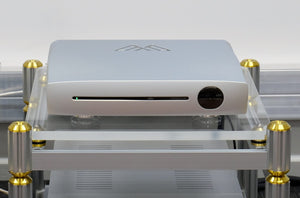
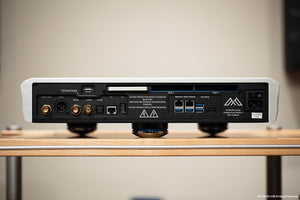 Vendor:Antipodes
Vendor:AntipodesAntipodes Oladra Server-Player-Reclocker
Regular price $29,000.00Regular price -
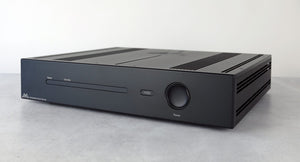 Vendor:Antipodes
Vendor:AntipodesAntipodes K22 Player & Reclocker
Regular price $9,000.00Regular price -
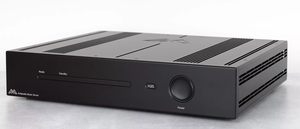
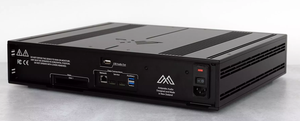 Vendor:Antipodes
Vendor:AntipodesAntipodes K21 Player/Renderer
Regular price $7,000.00Regular price -
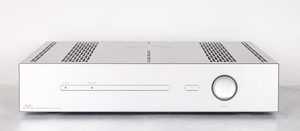
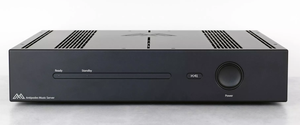
-
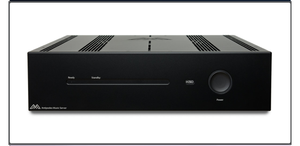
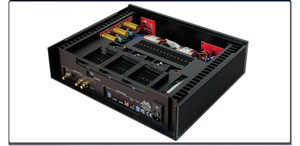 Vendor:Antipodes
Vendor:AntipodesAntipodes K50 Music Server, Player & Clock
Regular price $19,000.00Regular price
